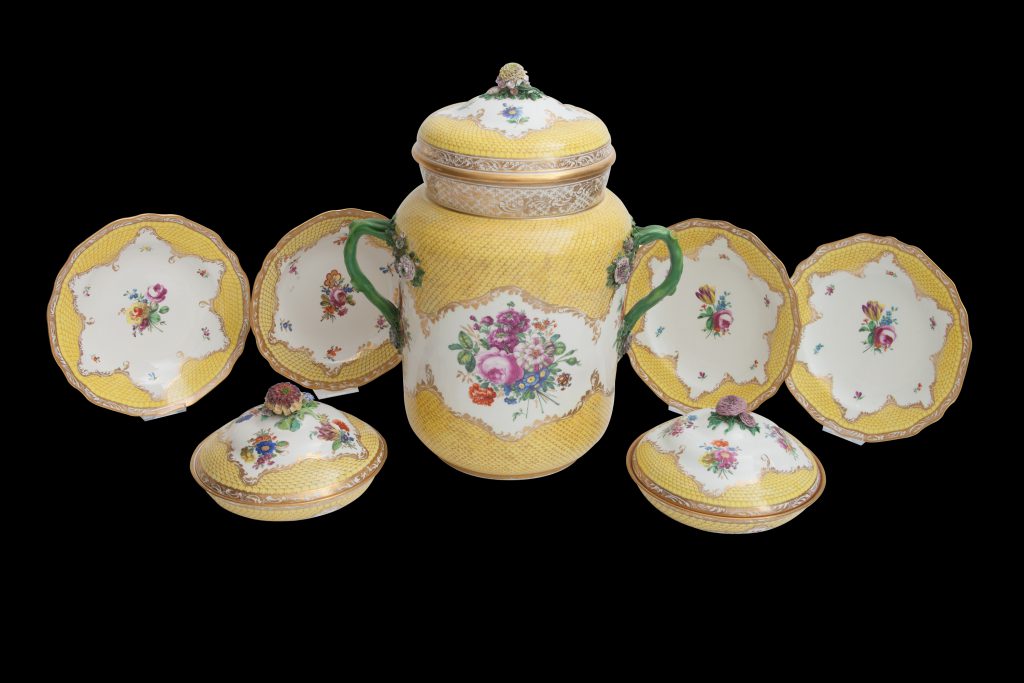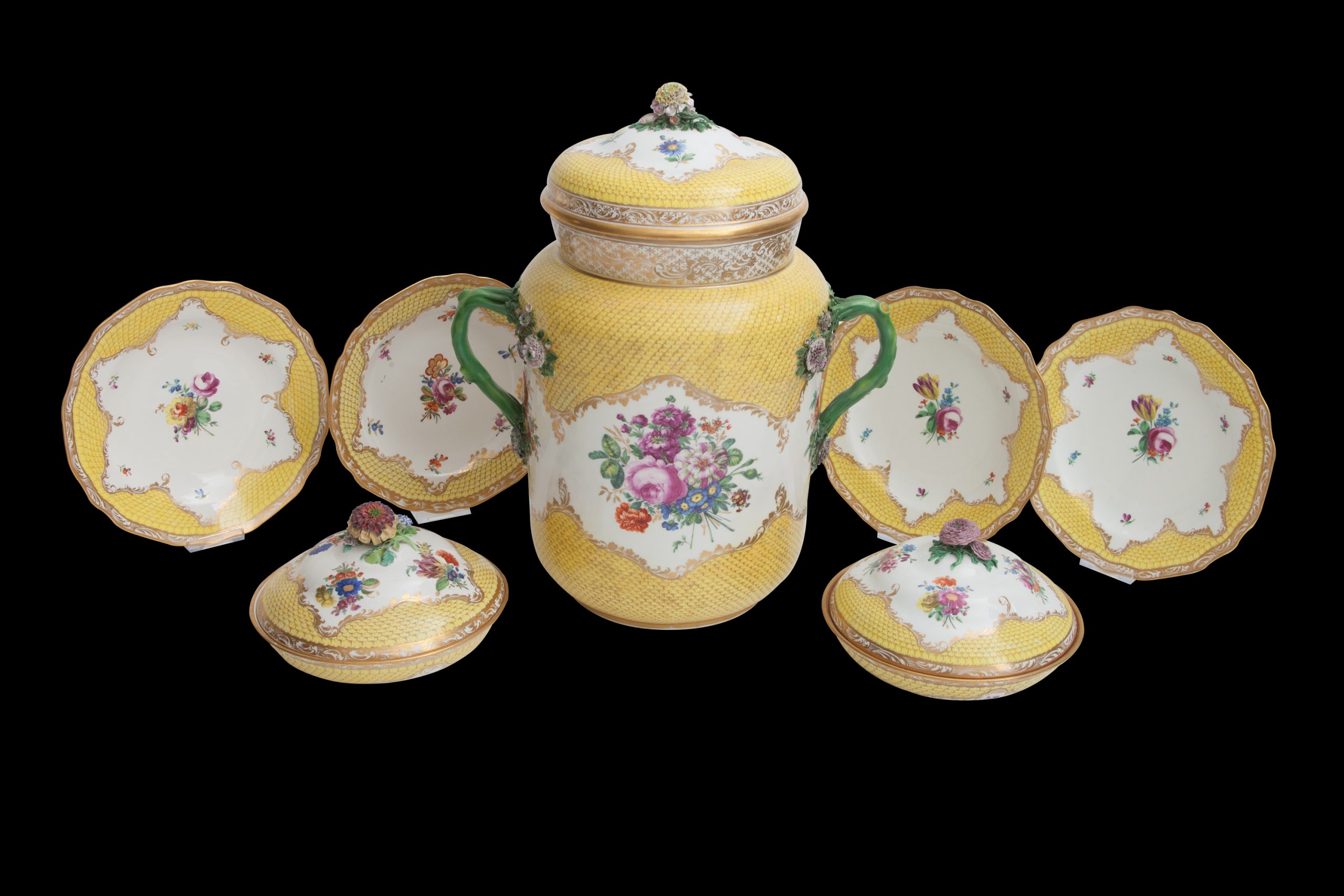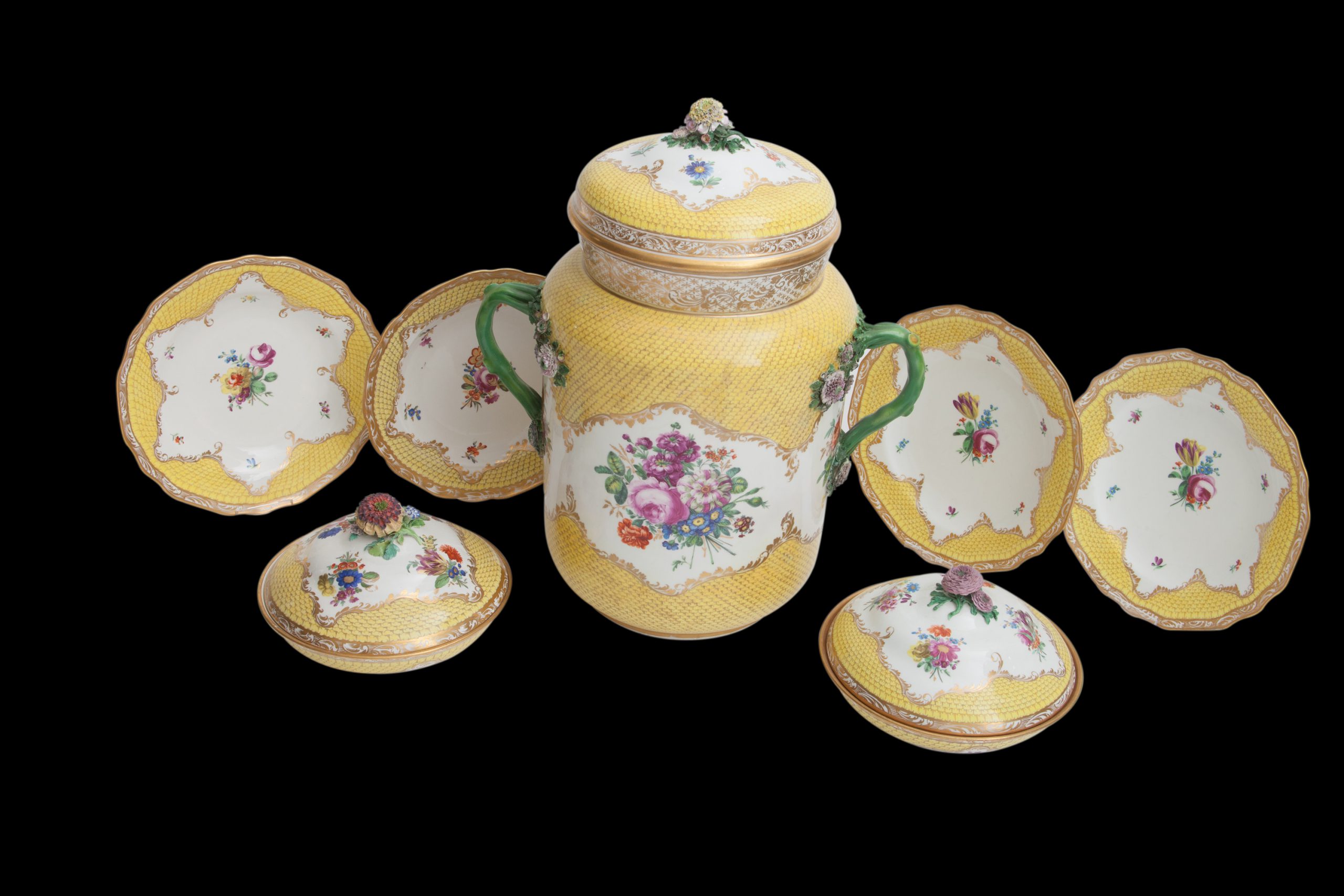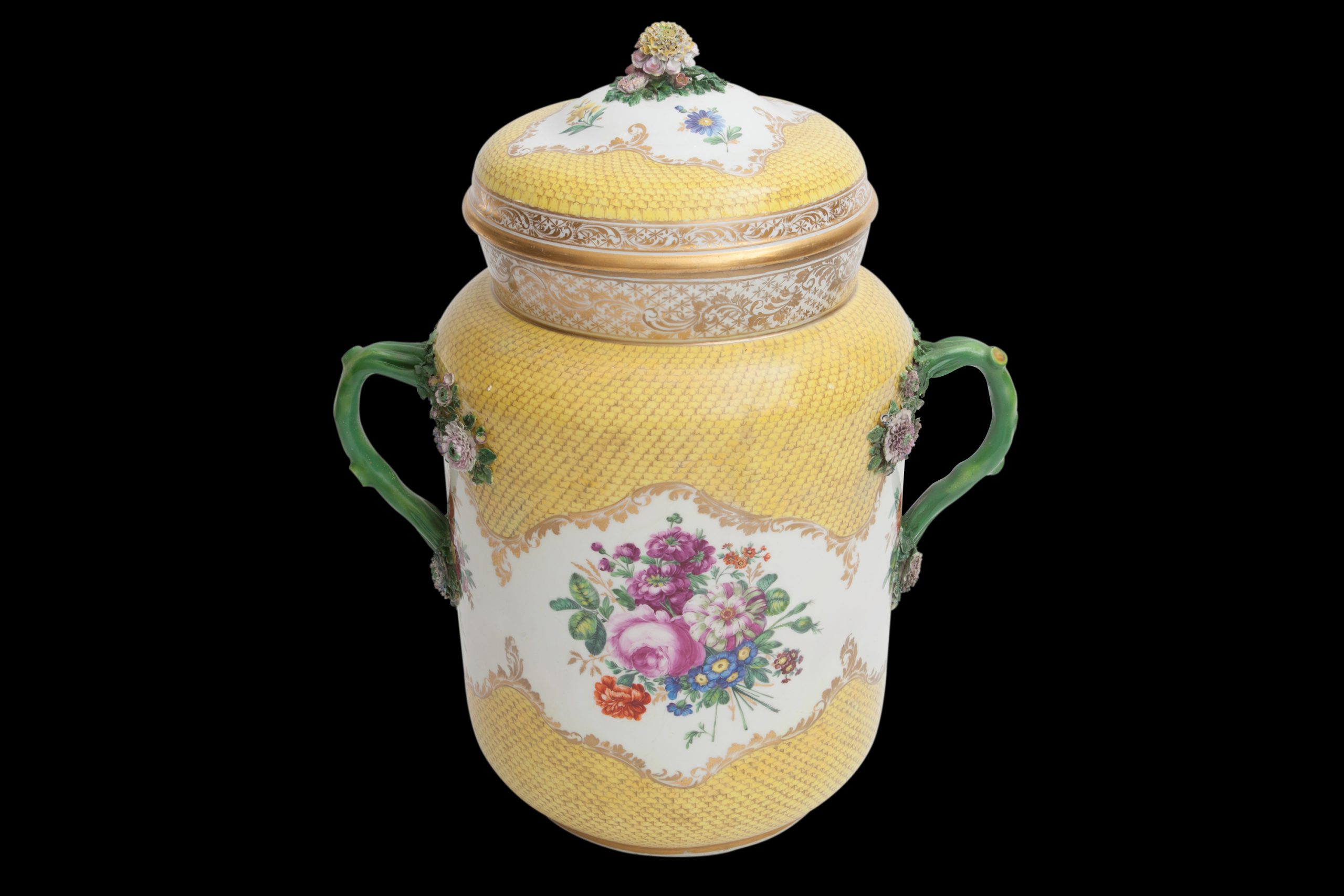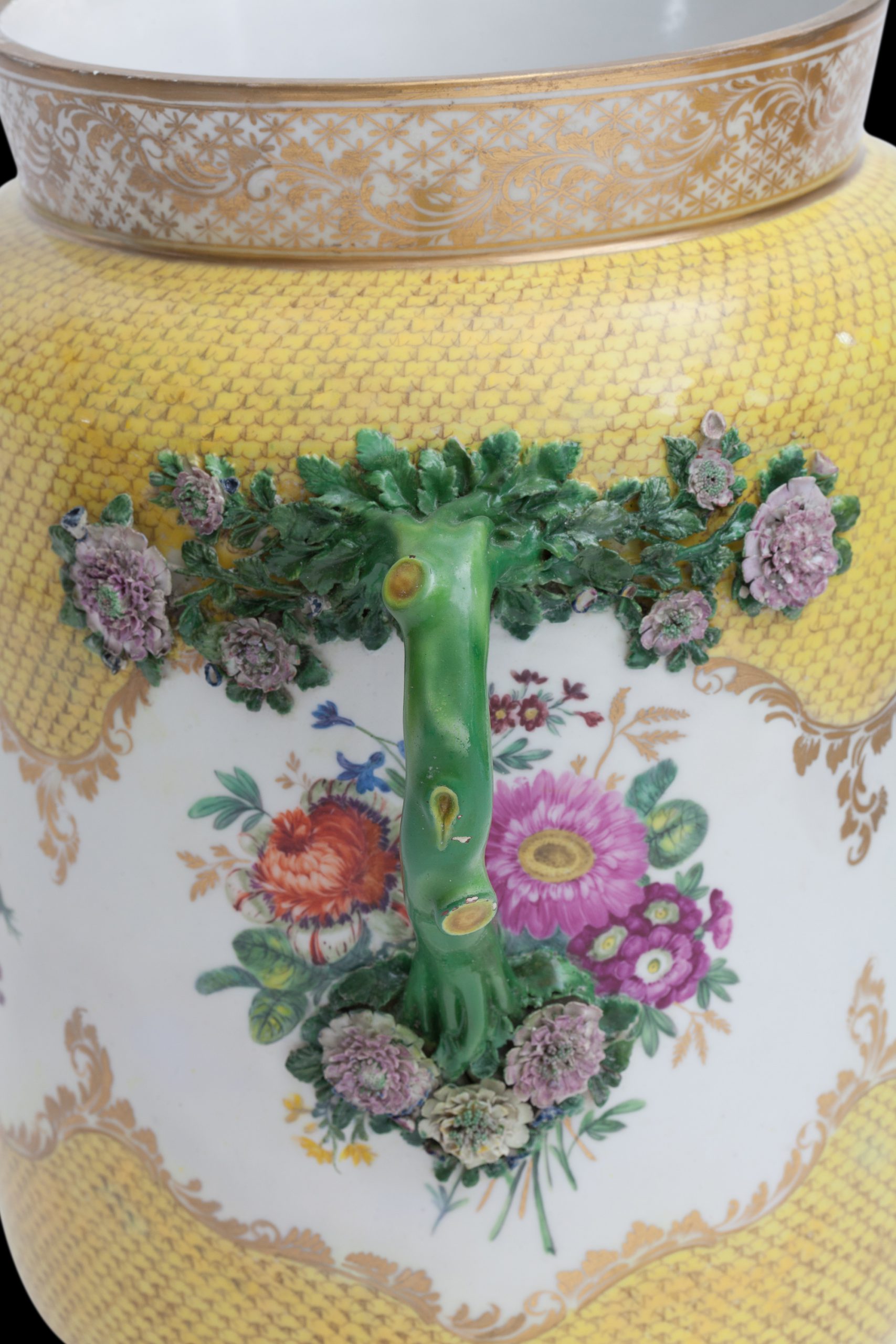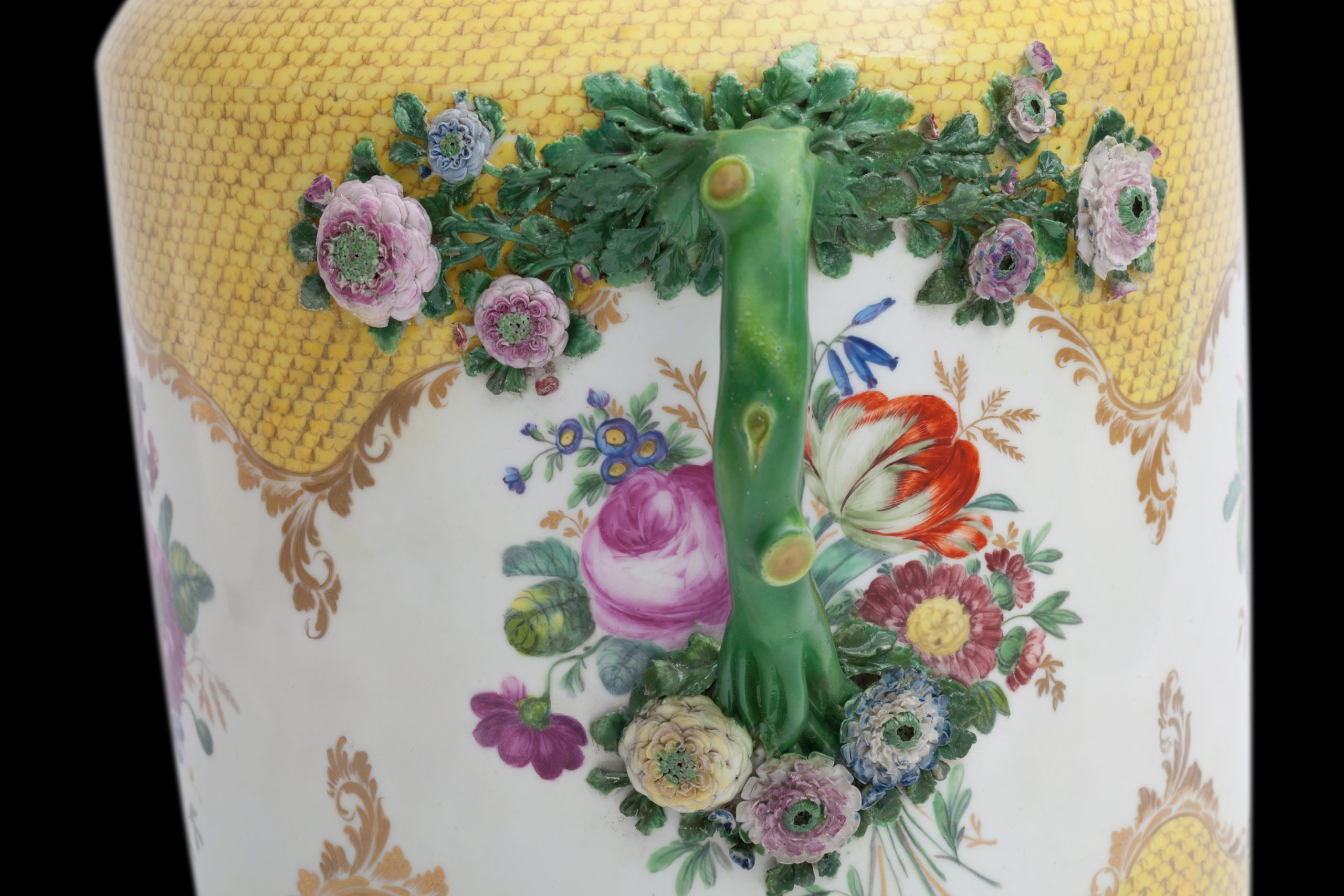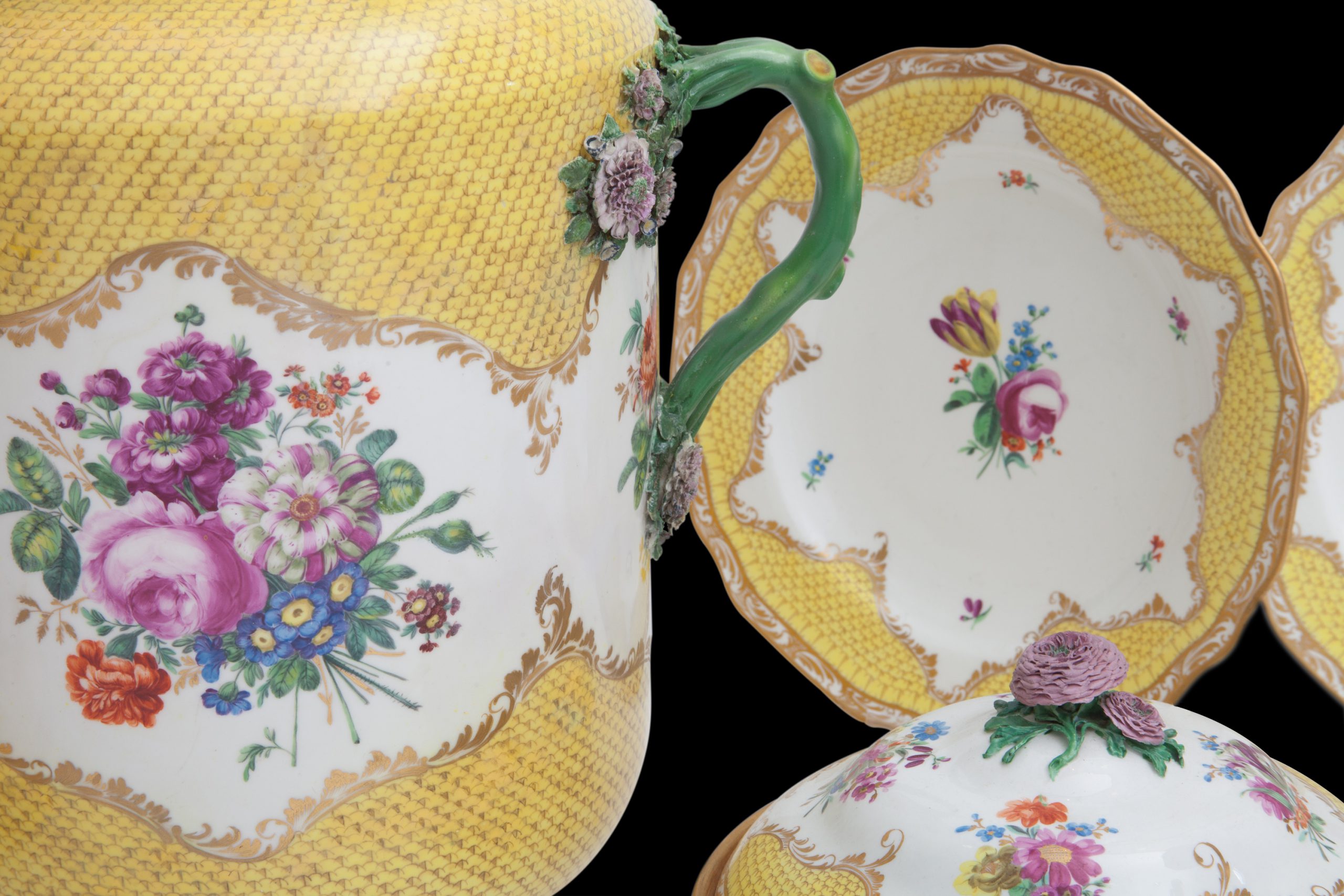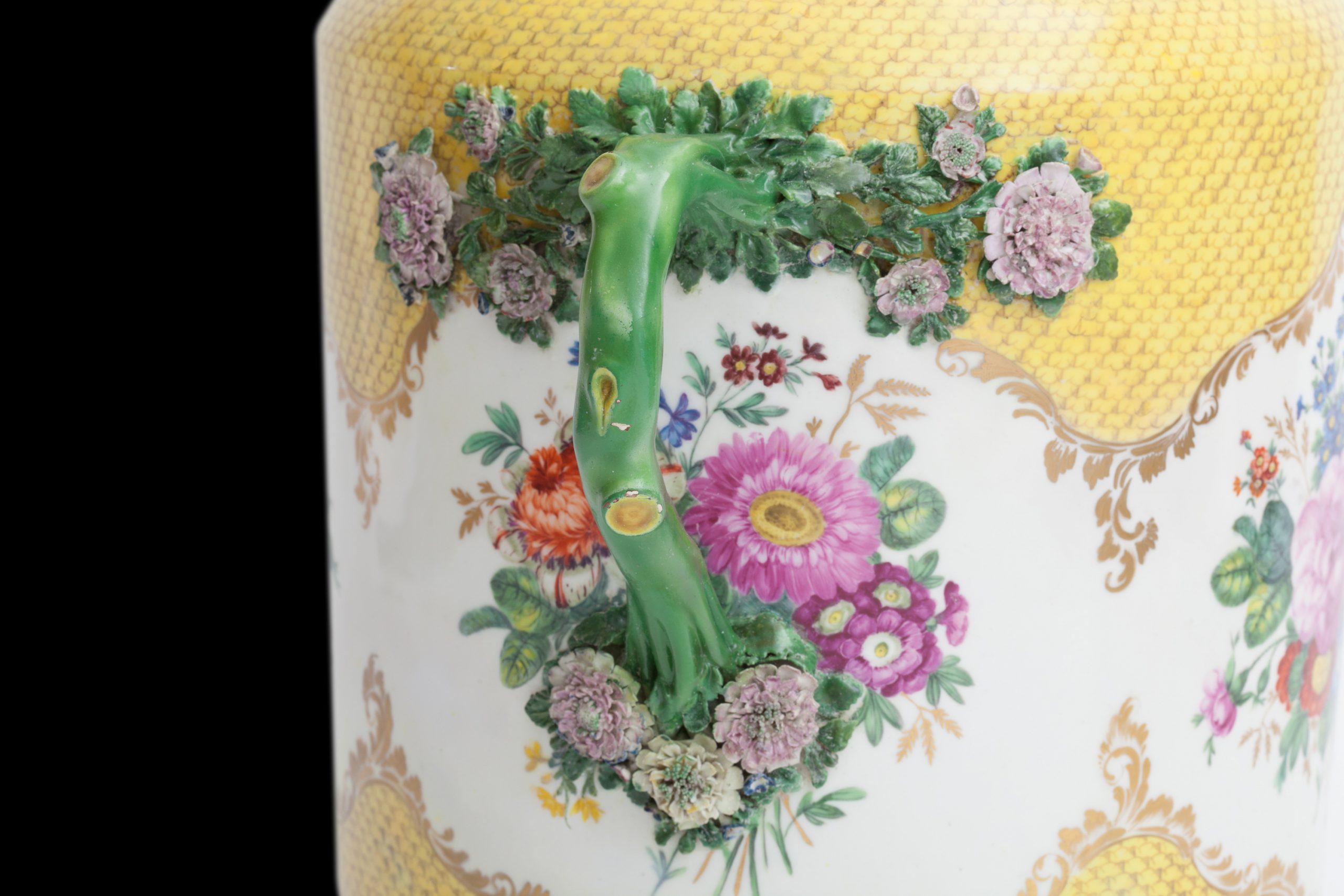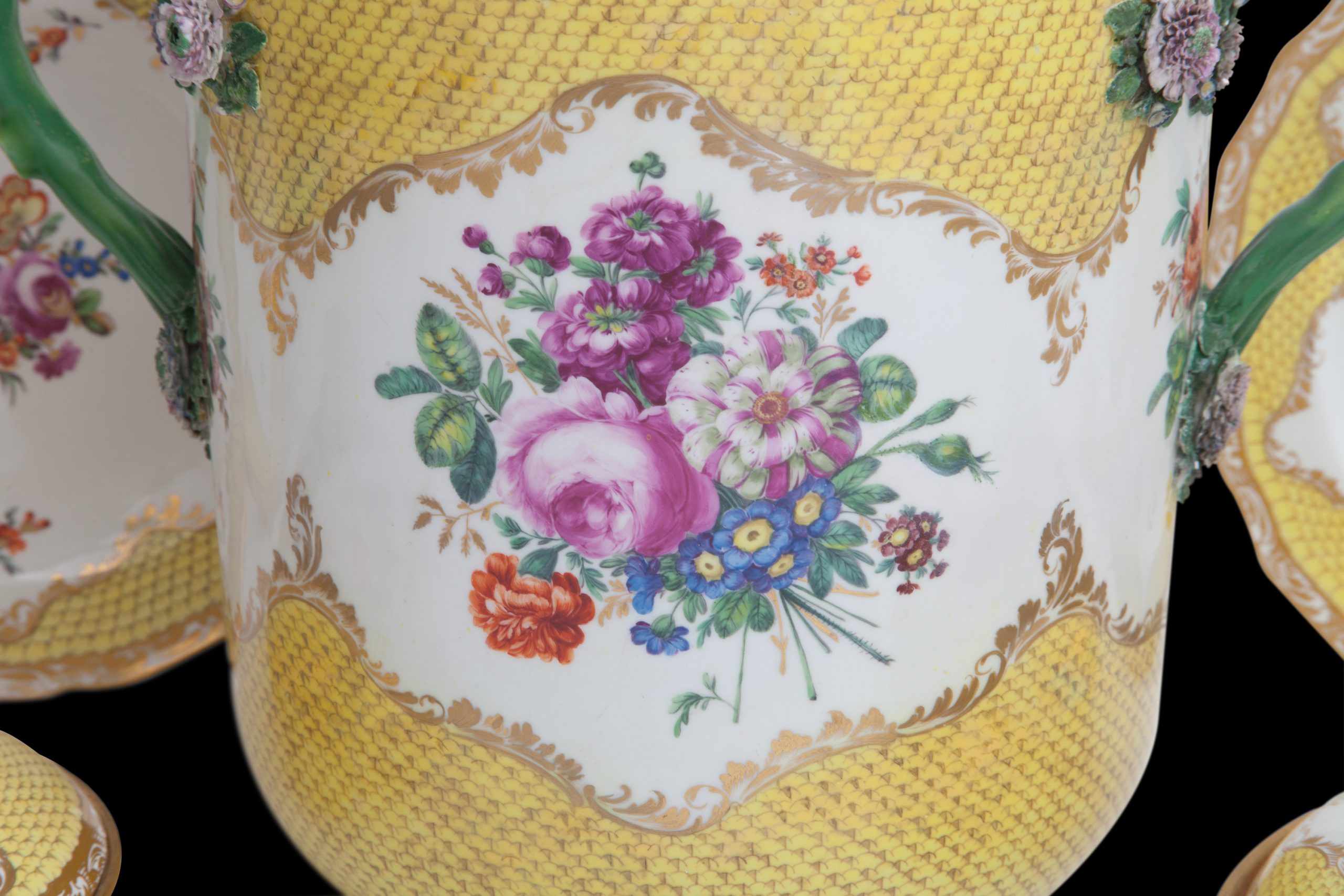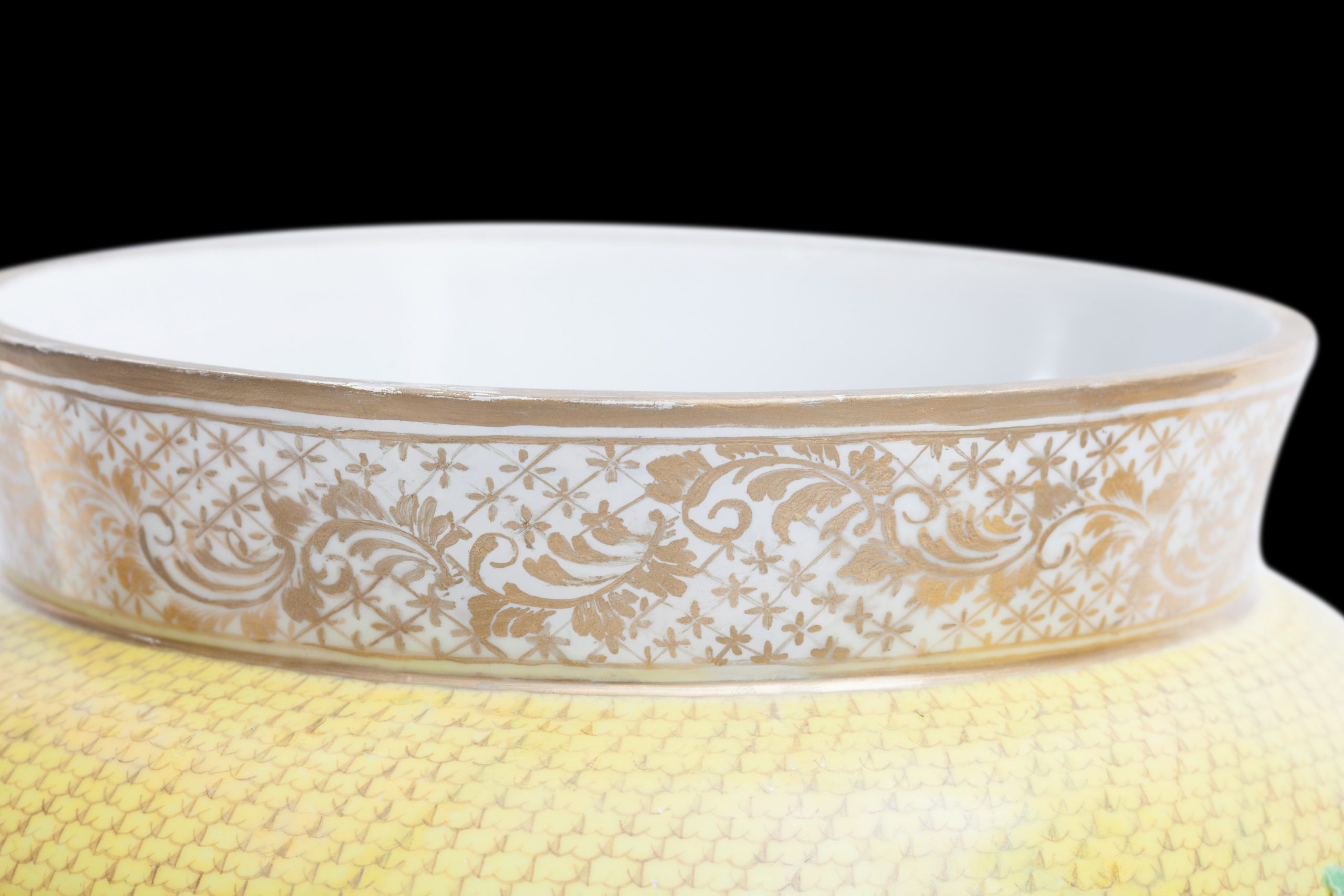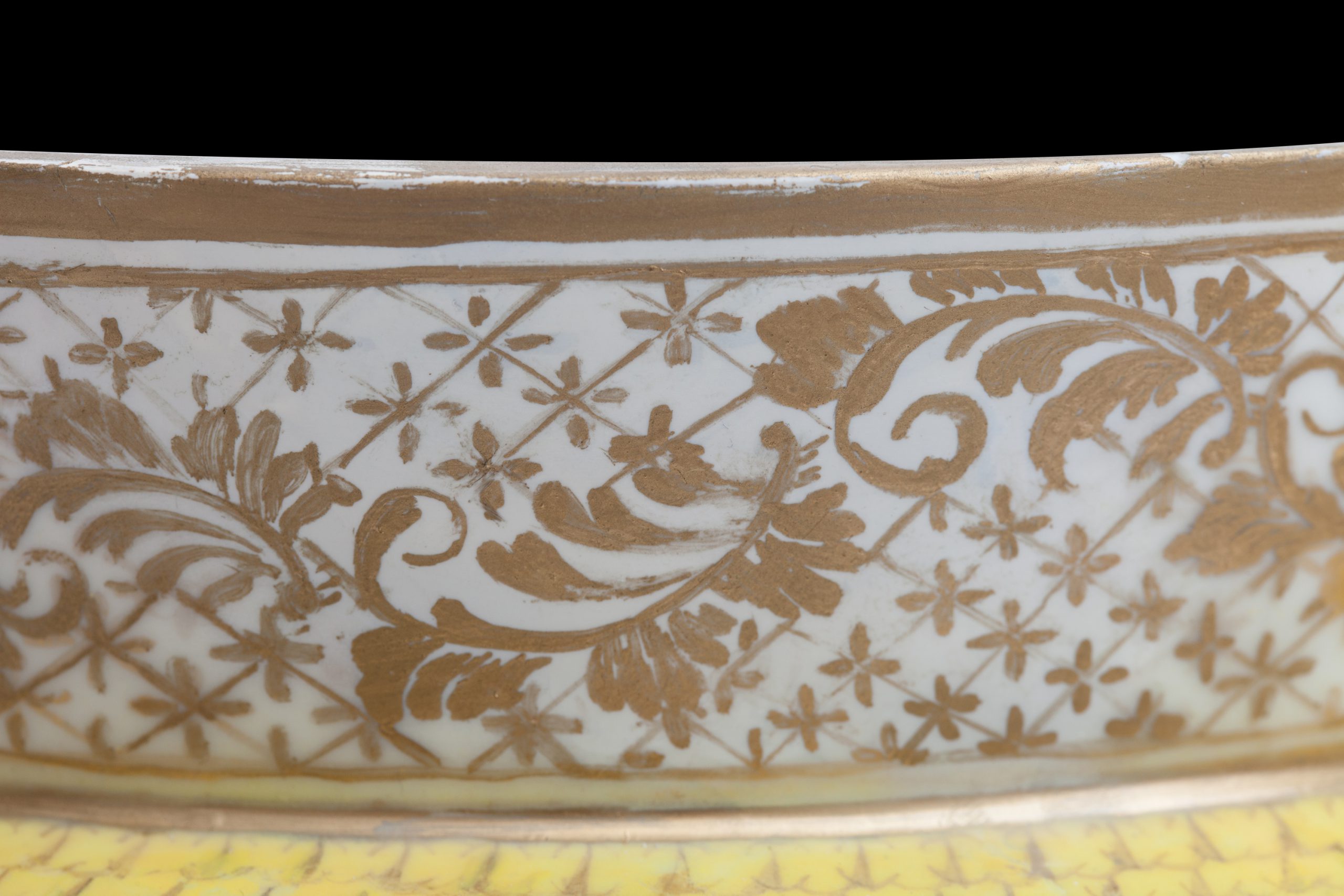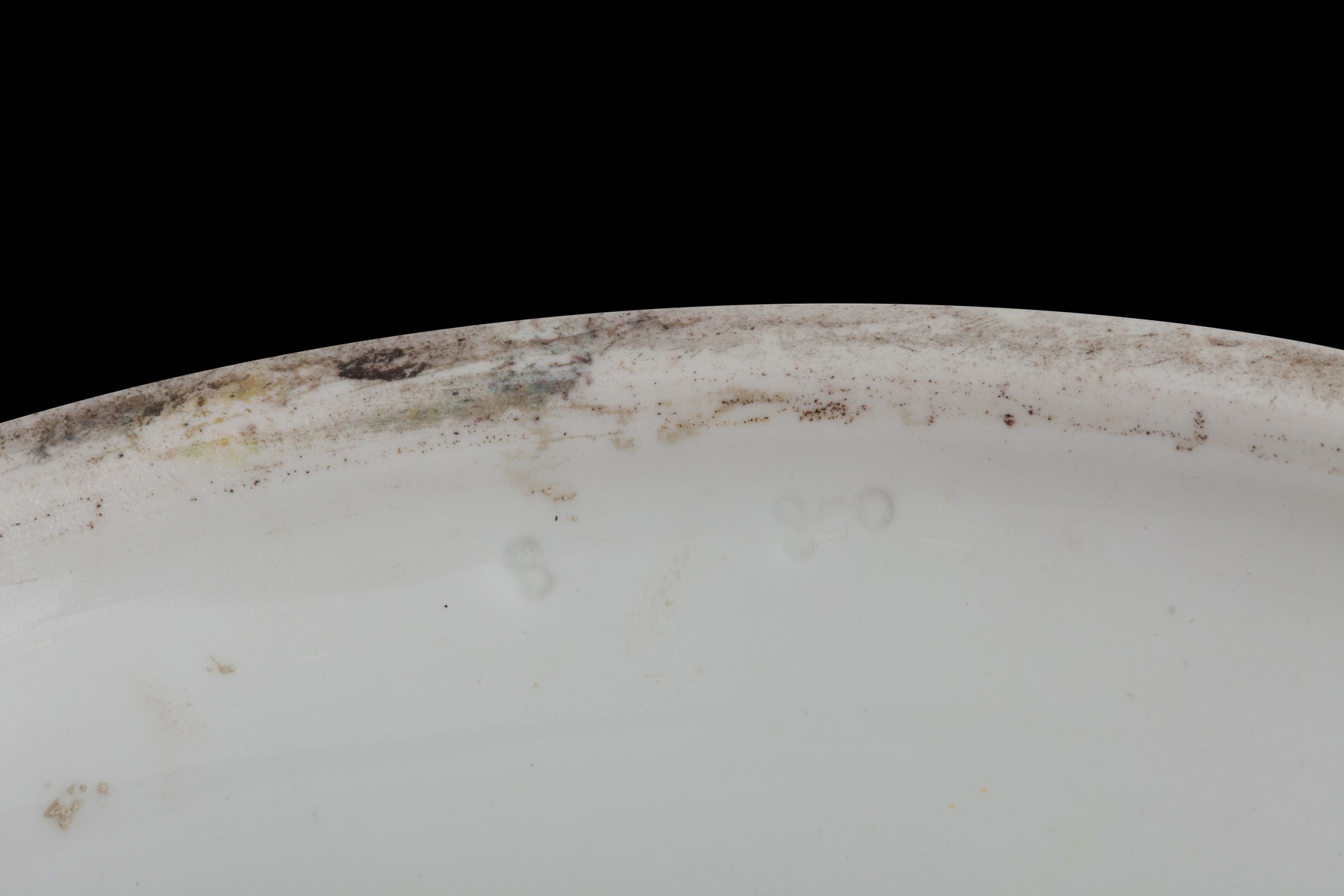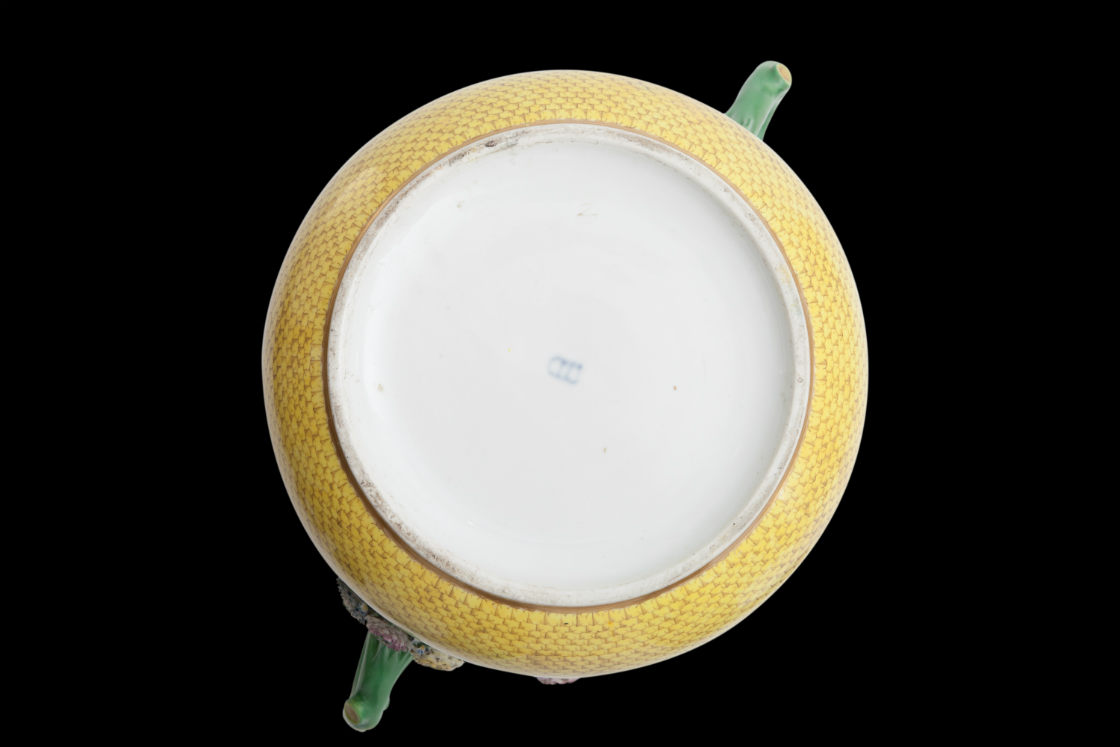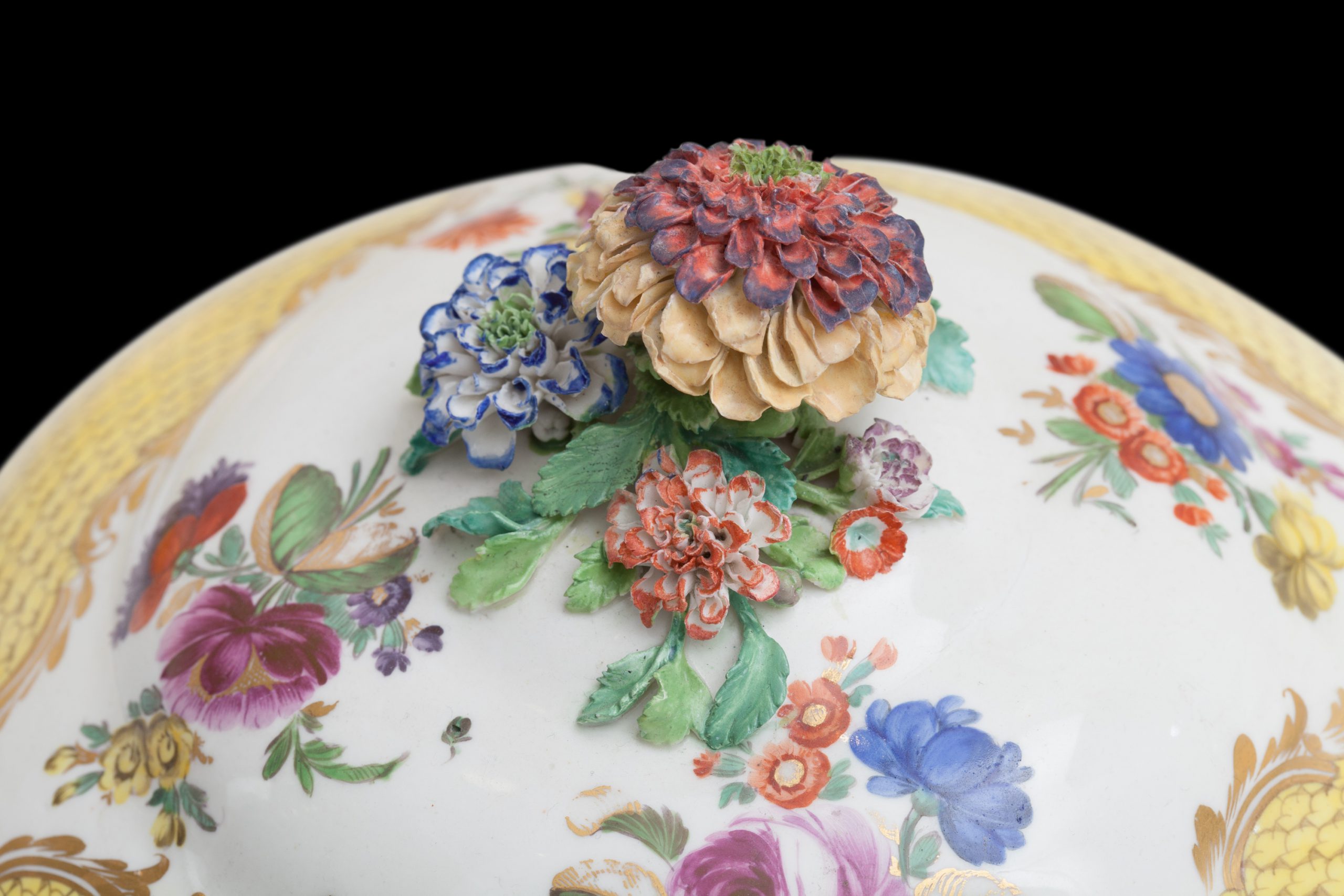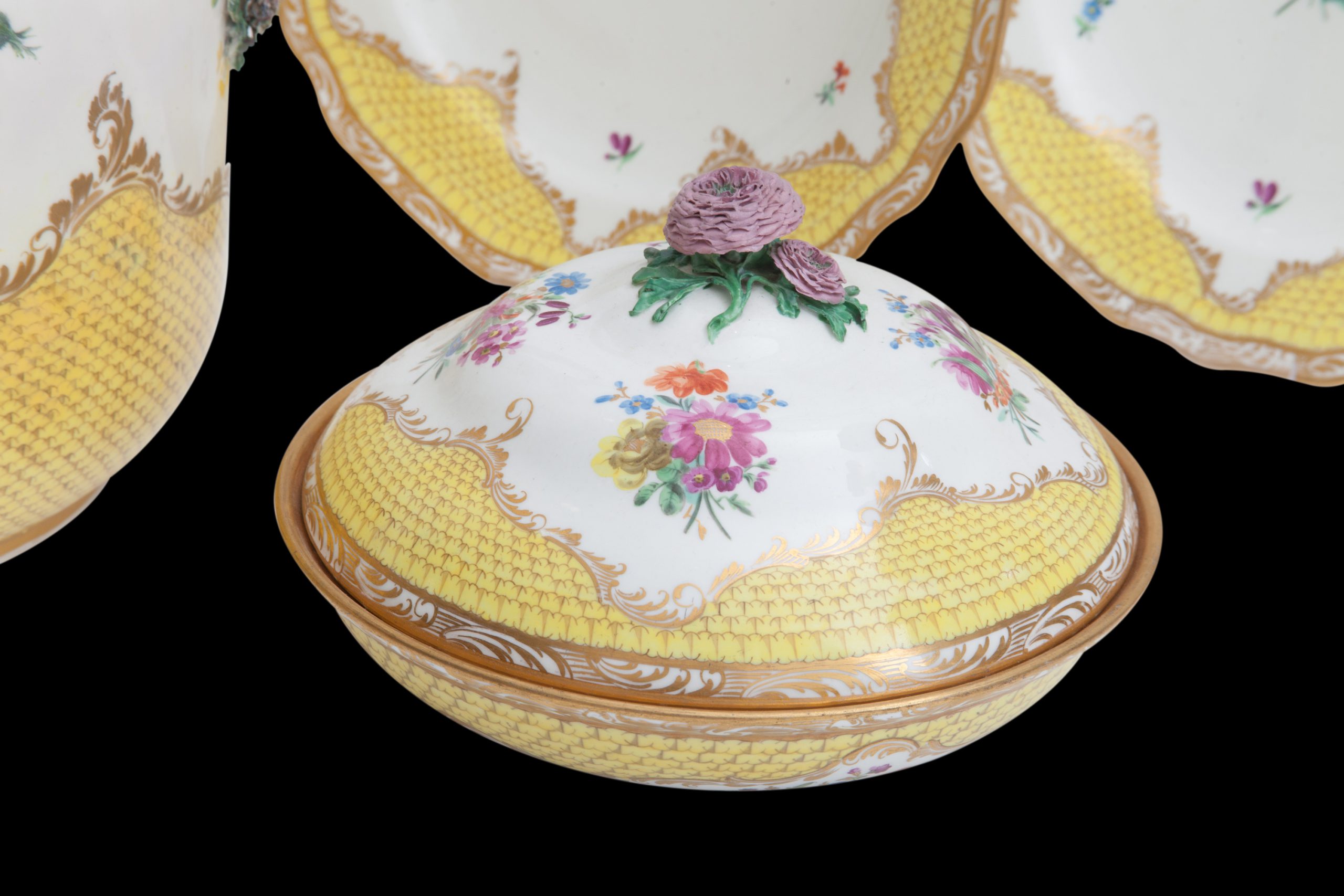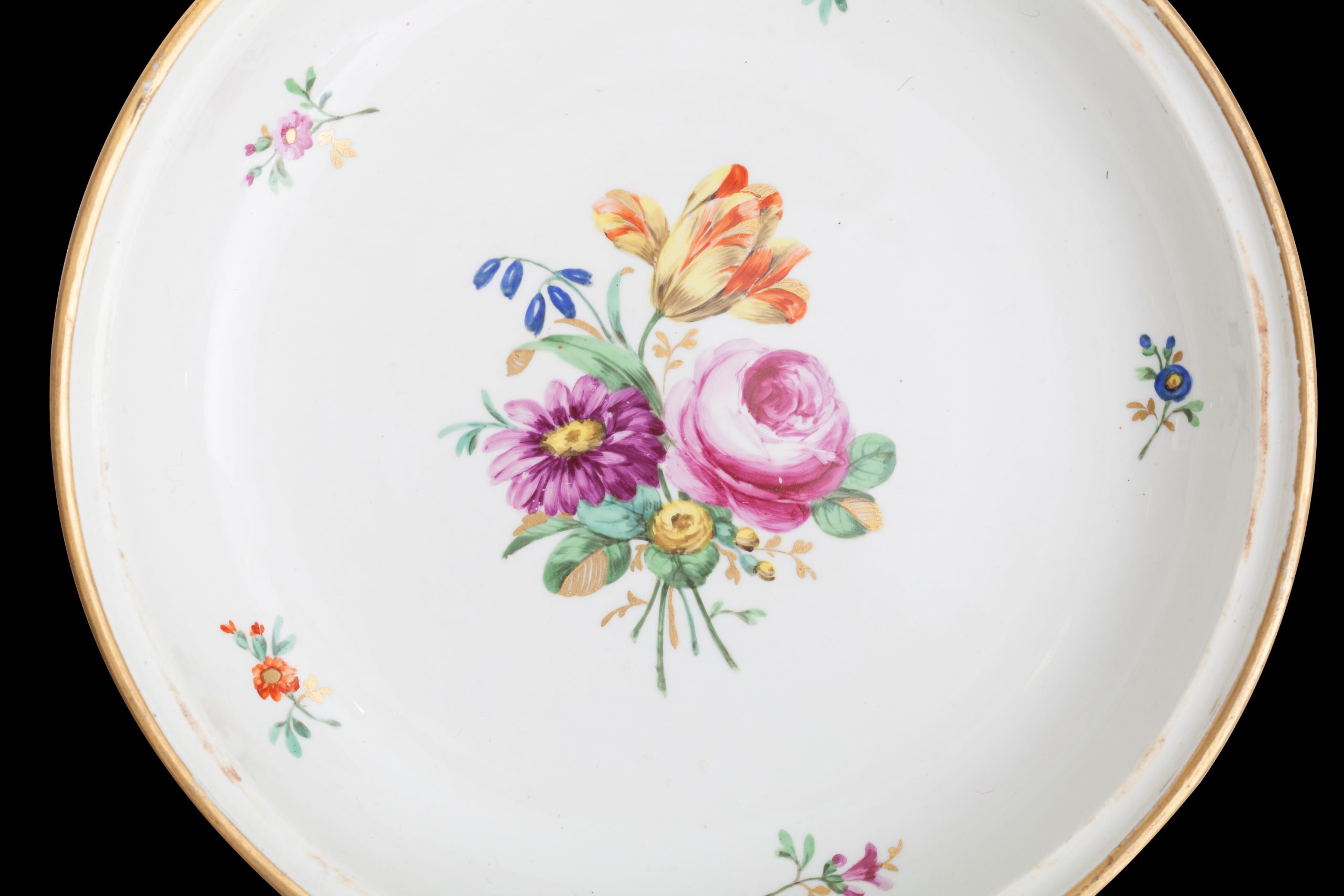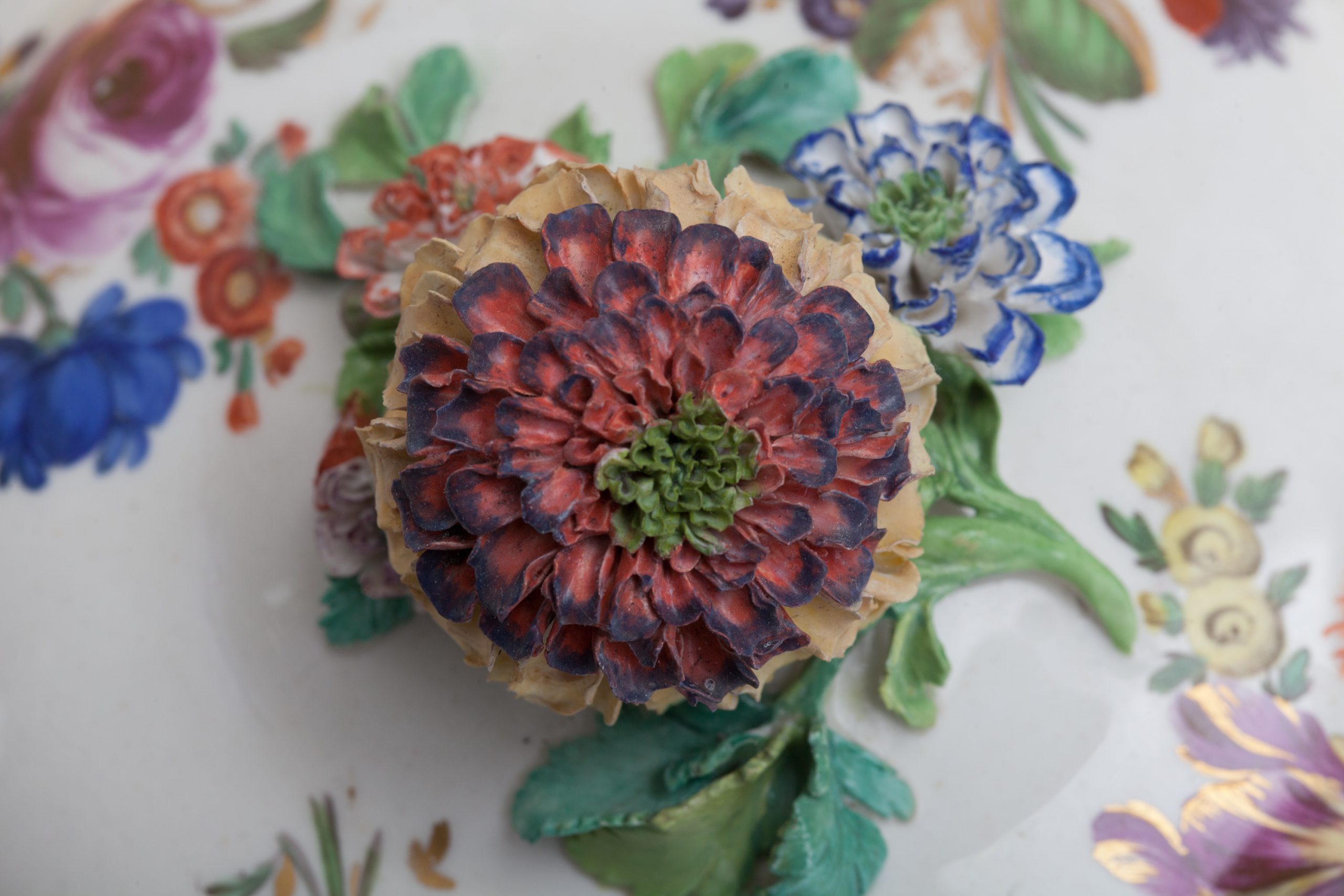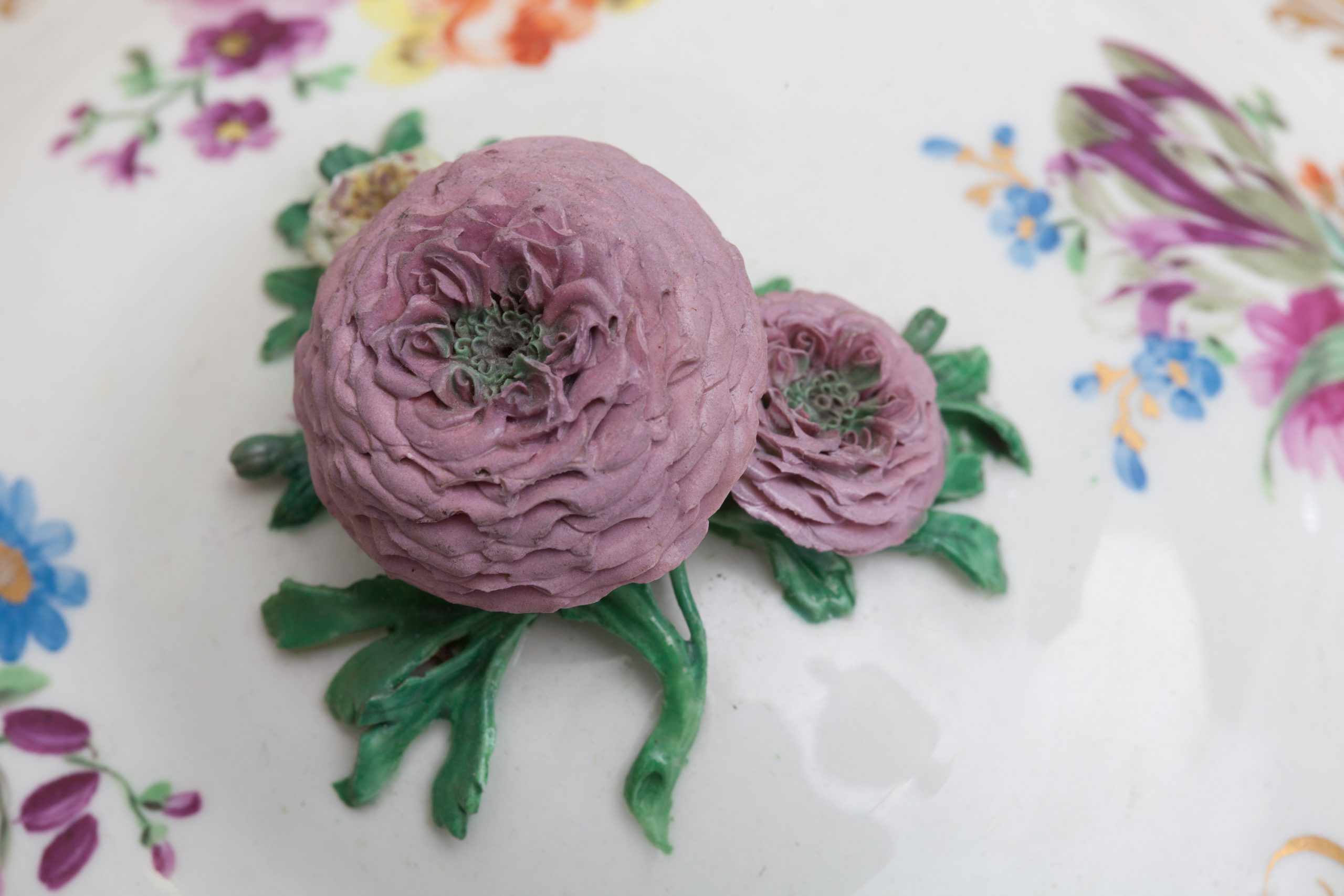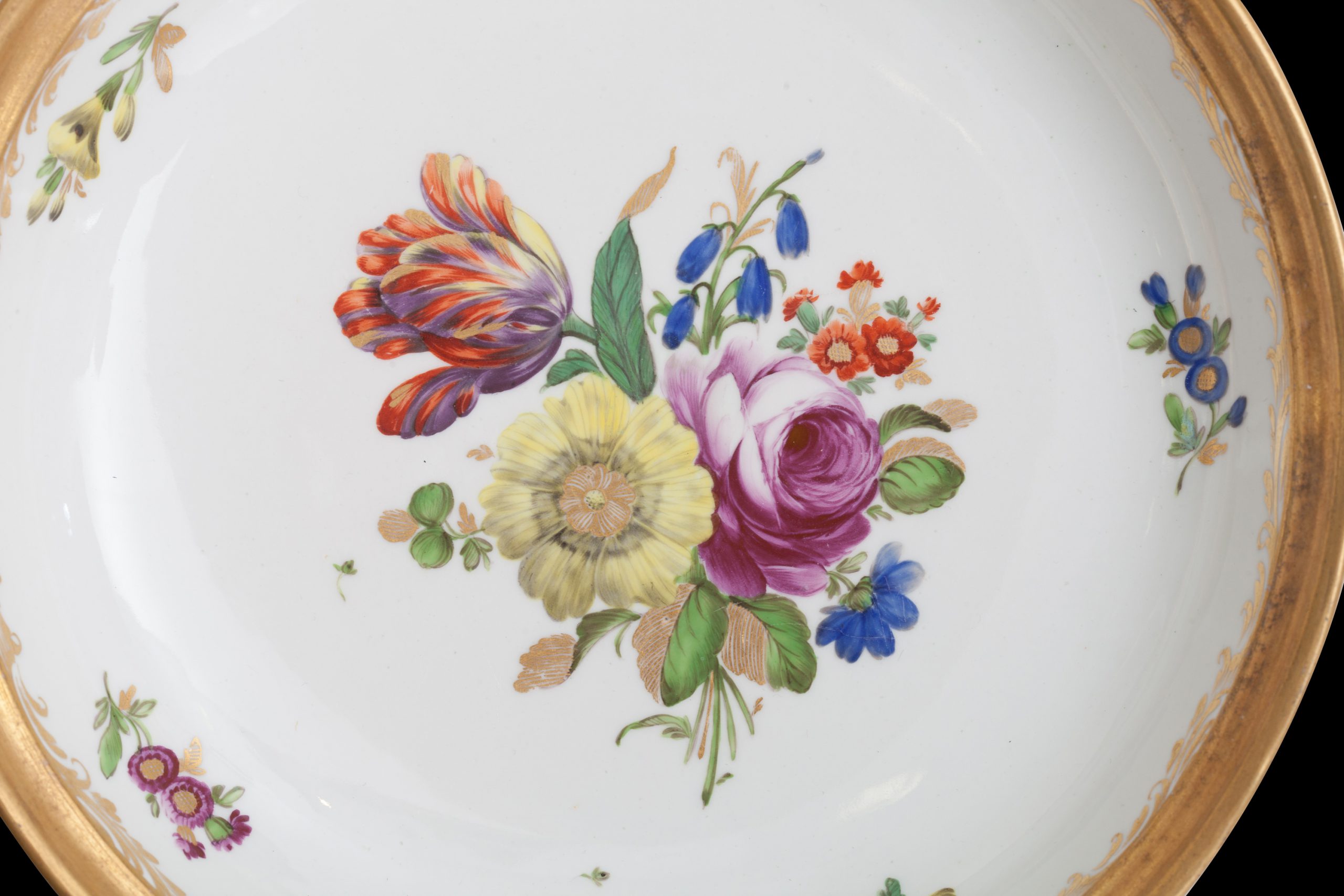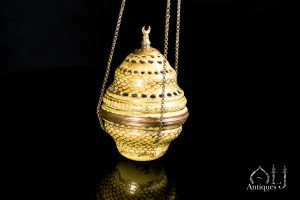Description
The collection comprises of one monumental and extremely rare lidded Sherbetlik porcelain jar or container decorated in overglaze enamels with floral sprays and yellow-ground scale-pattern panels with gilt borders, with stepped domical cover with roses and dahlias.
The Collection also comprises of a pair of Vienna Porcelain Covered dishes (Sahans) and four associated plates.
The plates of shallow form decorated in overglaze enamels with floral sprays and yellow-ground scale patterns panels with gilt borders, the dishes with stepped domical covers with rose and dahlias form finials, painted en suite with floral sprays and gilt-bordered panels filled with yellow—ground scales, the interiors with floral sprays and gilding.
Through centuries china-were and porcelain was normally supplied to the Ottoman market by China, but in the 18th. Century Europe started to receive demand to supply high quality Porcelain to the very Wealthy Ottoman Elite.
The European porcelain industry reached its momentum at the beginning of the 18th. century with the establishment of the Meissen porcelain factories in 1710 followed by Vienna and Berlin.
Meissen and Vienna began to manufacture porcelain-wear that is catered for the ottoman taste and objects were entirely made according to the ottoman order in addition porcelain was decorated with a scaled surface resembling crocodile hide or fish scale used together with floral designs, heavily gilded covered dishes decorated with bouquets of flowers set within an enveloping foliage are recognizable as the output of the Meissen workshops.
The knops of lids were always in the form of citrus fruit, particularly lemons.
We also find as examples of Viennese ware, covered dishes decorated with heavily gilded bouquets of flowers set in oval medallions on a monochrome ground and with fish scale patterns employed together with flowers in wavy lines.
Very much so like our present collection, the output of these two factories resemble one another and also the emphases to details of the inside decoration of the dishes and lid catered for the ottoman taste.
Examples of the Ottoman orders were mainly the following: –
Covered dishes and cups, bowls, pudding ewers (Asurelik) and for a very limited edition of (Sherbetlik), similar to our present example.
The word Sherbetlik or Sherbet has been used in the English language for several centuries (it was first recorded in 1603) it came into English from the Ottoman World and originally it was derived from the Arabic word Sharab, meaning to drink or a drink, sherbet is a chilled beverage of sweetened, diluted fruit juice that was popular in the middle-east, and still can be found in major middle-eastern cities often sold cooled with cold spring water at ancient times or snow at present.
(Sherbetlik porcelain-were usually imported from China or made by the Ottomans by using different metalware i.e. Gilt-Copper (tombac) for the wealthy, or tinned-copper or brass for the public.
(For a similar example see Osmanli Sarayinda Avrupa Porselenleri – European Porcelain Made for the Ottoman Palace, inventory No. 26/4752 listed at the Topkapi Palace Museum, published by the Sabanci University of Istanbul, exhibition 2005).

